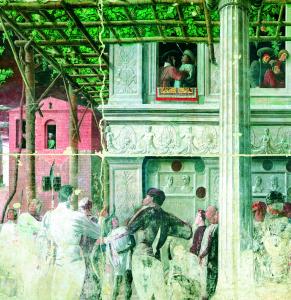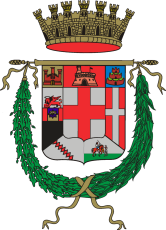Tipologia museo
Gratuito

Descrizione
La chiesa è eretta a partire dal 1276, in un'area in cui era presente un edificio religioso già nella prima metà del 1200, ugualmente dedicato ai Santi Filippo e Agostino. L'interno è impostato su un'unica navata, soluzione usata per le aule di predicazione, tipologia molto cara agli ordini mendicanti e termina con tre absidi, di cui la centrale è il doppio di quelle laterali. L'interno ha perduto molte delle decorazioni di cui la chiesa era ricca, in seguito ai bombardamenti della II guerra mondiale dell'11 marzo del 1944. Le ferite più gravi sono nell'area del presbiterio, dove rimane solo la parete sinistra del ciclo di affreschi di Guariento, dedicato alle Storie di S. Filippo e S. Agostino e dipinto entro la metà degli anni '60 del 1300. Dopo la guerra è stata ricostruita la cappella Ovetari, nella quale avrebbero dovuto confrontarsi, secondo la volontà della committente, la scuola veneziana e quella padovana, illustrando le Storie di San Cristoforo e S. Giacomo e portato a termine da Andrea Mantegna. Dopo la ricostruzione della chiesa, sono stati ricollocati in loco i due affreschi originali dipinti da Mantegna con l'Assunzione della Vergine ed il Martirio di San Cristoforo che, essendo stati strappati, non sono stati danneggiati dal bombardamento.

Eremitani Church
People from Padua built the church in 1276 within an area in which another religious building was dedicated to St. Filippo Neri and St. Agostino since the first half of the thirteenth century. The interior is a single nave, a solution adopted for the preaching rooms that was also very special to panhandlers, and ends with three apses (the central one is twice as large as the lateral ones). Unfortunately, after the bombing of the 11th March 1944, the interior lost a significant part of the decorations of which the church was wealthy. The presbytery area shows the most severe wounds: of the cycle of frescoes made by Guariento in the mid-1360s, dedicated to the tales of St. Filippo and St. Agostino, only remains the left wall. The Ovetari Chapel, in which, according to the customer’s will, the Venetian and the Paduan schools should have confronted each other, illustrating St. Cristoforo and St. Giacomo’s tales, has been rebuilt after the war. Later, Andrea Mantegna completed it. After the church’s reconstruction, the two frescoes by Mantegna (the Assumption of the Virgin and the Martyrdom of St. Christopher) were relocated to their place. The bombing hadn’t damaged them because they had been torn apart.

